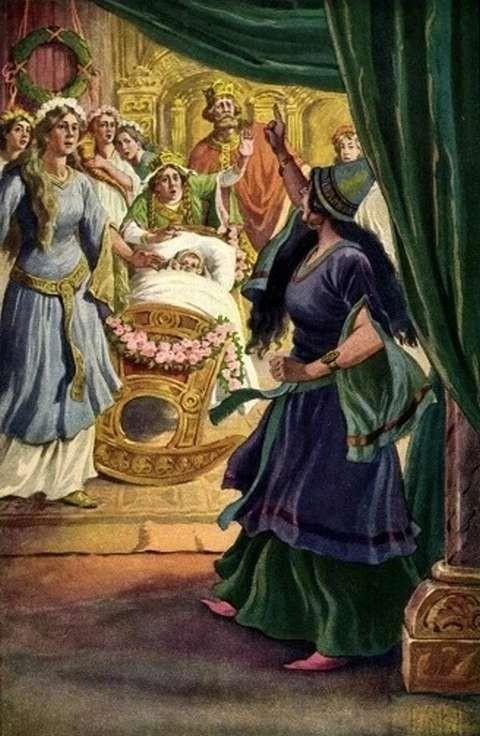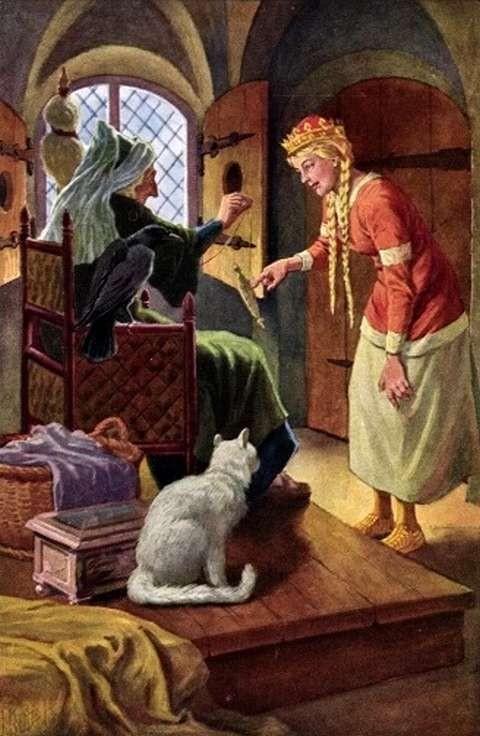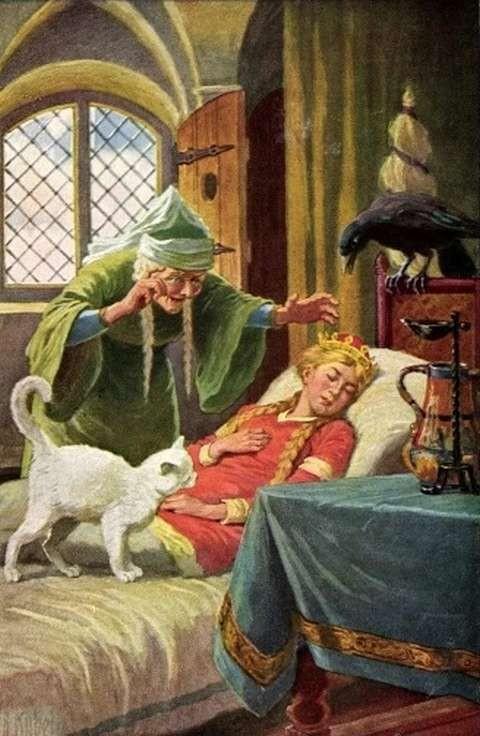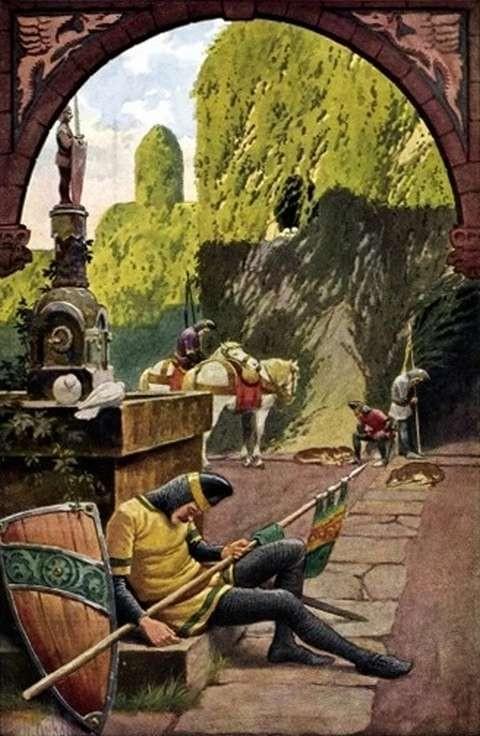The series of six postcards with scenes from Sleeping Beauty was illustrated by Otto Kubel and published by Uvachrome in 1930.

The plot starts with a curse. Many fairies were invited to the baptism of the baby princess but one was forgotten. She was furious. When others gave the girl presents in the form of different virtues, she decided to give something special too.
When the girl turns fifteen, she will prick her finger with a spindle and die!
Fortunately one of the fairies still didn't give her a present, so she was able to soften the curse a bit. Just a little bit. Instead of death, the girl will just fall into a long sleep. Very long sleep actually. One hundred years long sleep!

Despite the king's attempts to ban the spindles around all of his kingdom, the prophecy is fulfilled and the curse is activated. The girl, now a teenager, finds a room in the castle's tower, where an old lady sits with a spindle.
Of course, she wants to try the strange thing.
Of course, she pricks her finger.
Of course, she fell down.

But the nice fairy who changed the curse from a death sentence to long sleep helps with another spell.
You see, long sleep could be just as scary as death, in some points even scarier. What would await for the girl who wakens after a full century? The world would definitely be different. And everybody she knows would be dead.
Not a very promising situation, right?
So the good fairy puts the spell on everybody in the castle. Including animals. Everybody is asleep just like the princess. They will sleep as long as she will. To make them safer, thorns grow all around the castle, so no intruder would do them any harm.

Indeed, everybody sleeps.
A legend about the sleeping beauty in the cursed castle surounded by thorns is told among the locals and with years more and more people heard about her. Many brave youngsters tried to find the place and some succeded in finding the building protected by thorns. Nobody managed to get through and numerous young lives were lost by trying.
Finally, one hundred years have passed.

A handsome prince came by and, like everybody else, made an inquiry about the beautiful girl who suffers from the nasty spell. He got directions and continued. He is determined to save the princess.
When he reached the thorns, the path opened in front of him, and without any trouble, he got through the yard, through the castle, right to the room where Sleeping Beauty slept.
Almost everything is ready to end the curse. Just one thing is missing ...
The kiss!

The Sleeping Beauty or Briar Rose, as the Brothers Grimm titled this classic fairy tale, is known in numerous versions and can be traced to several myths and even so-called Arthurian legends. Due to its abundant symbolism and so many variations across different languages, places, and cultures, it can be interpreted in very different ways.
Otto Kubel obviously decided to portray the title character as an example of Germanic beauty - blond, strong, and still feminine. Paintings are still very much in tune with romanticism although a certain shift to naturalism is already seen.
With a bit of observation, we can also see how skillfully he added some symbols to connect otherwise separated postcards (they were sold in sets of six but sent one by one). For instance, pink roses are used on the cradle (new life) and around Sleeping Beauty's bed (new life, again).
Enjoy the pictures and don't forget to tell your friends.